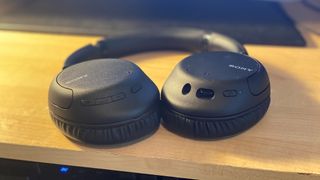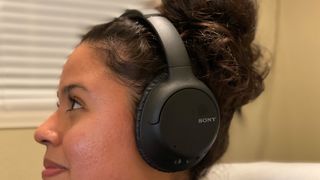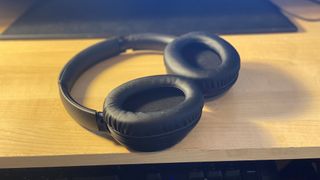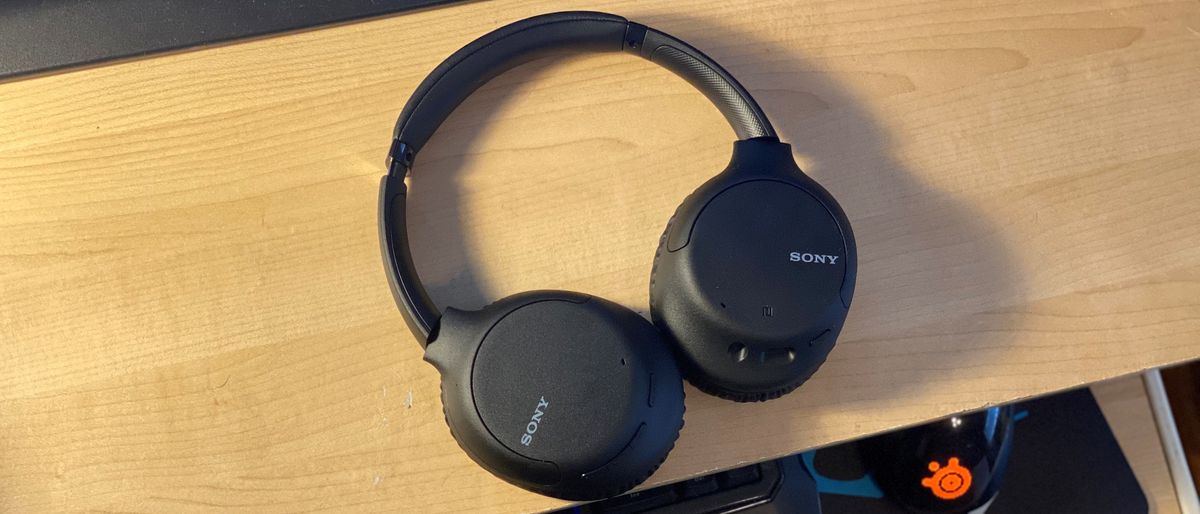TechRadar Verdict
As much as we wanted the Sony WH-CH710N Wireless Noise-Canceling Headphones to be a more affordable alternative to Sony's flagship headphones, they don't quite fit the bill. They sound good and use some novel adaptive noise cancellation technology, but their overall noise reduction effectiveness and mostly plastic build quality leave a lot to be desired.
Pros
- +
Cheap(ish) for their feature set
- +
Adaptive noise cancellation
- +
Fun, energetic sound
- +
35-hour battery life
Cons
- -
Mostly plastic build
- -
Mediocre noise cancellation
- -
No traveling case
- -
Long charging time
Why you can trust TechRadar
On paper, the Sony WH-CH710N Wireless Noise-Canceling Headphones make a lot of sense: They’re supposed to be a more affordable version of the popular Sony noise-cancelling headphone that cost double the price or more.
The trade-off here is that the brand-new WH-CH710N use a mostly plastic build to reduce cost, cut out the Hi-Res Audio support completely and don’t exactly live up to the level of jaw-dropping sound blocking that you get from the best noise-cancelling headphones, such as the Sony WH-1000XM4 or Sony WH-1000XM5.
There aren't many headphones out there that offer active noise-cancellation at this price point – which is a testament to Sony's engineering team – but after testing them we can't help but feel Sony made too many deep cuts in too many places, making these cans a middling contender that faces steep competition on all sides.
Price and release date
The Sony WH-CH710N were released alongside the Sony WF-XB800 wireless earbuds in April 2020... which turned out to be a decent time to release noise-cancelling headphones, because so many people started working from home.
In terms of pricing, the Sony WH-CH710N launched in the mid-range for a pair of over-ear headphones at $199 (£130, around AU$300), but were actually one of the more affordable pairs of noise-cancelling headphones on the market, especially coming from a large, well-known company like Sony.
These days, you can find them for well under $100 / £100 pretty regularly, which certainly helps make them more tempting, and makes their limitations easier to accept.

Design
In terms of aesthetics, there’s a lot to like about the WH-CH710N - they’re relatively slim for a pair of over-ear headphones and the all-matte-black exterior looks pretty classy. They're the kind of headphones you could wear on public transportation without drawing attention and while they certainly could be a bit more form-fitting, they're certainly not the bulkiest cans on our test bench.
Put them on and you'll be surprised at how light they are. Weighing in at 223g/7.87oz, they don’t put a ton of pressure on your head when wearing them however the drawback is that they're mostly plastic and the padding is minimal.
On the right earcup you’ll find your basic control buttons for volume and play/pause, plus a button that controls noise cancellation and ambient sound, two features we’ll talk about more in a minute. You can hold the middle button to bring up your assistant, but you won’t be able to activate it just by saying ‘Hey Siri’ or ‘OK, Google’ as neither come built into the headphones. On the left earcup are a 3.5mm aux port, a power/paring button and USB Type-C port that’s used for charging.
The headphones don’t come with a hard case - which makes them less ideal for frequent travelers - nor do they come with a charging brick; inside the box the only accessories you’ll find are a super-short USB-to-USB C cable and an auxiliary cable.
Most folks will likely pair them using the power button when they first turn them on, but the Sony WH-CH710N does support NFC, too - which is great for newer Android devices - and the headphones use Bluetooth 5.0 with support for SBC and AAC codecs. Disappointingly they don't seem to support LDAC or aptX - which means you don't get Hi-Res Audio support.

Performance
So what, then, do they actually sound like? Well, our first impression of the Sony WH-CH710N’s sound quality was that it sounded energetic and easy-to-listen to. They didn’t overwhelm us with bass (they're not part of Sony’s Extra Bass series) and we thought we heard a clear midrange and rolled off highs.
After spending eight hours a day listening to them for three straight days, though, that opinion began to shift. Music that sounded energetic and easy-to-listen to slowly began to lose its shimmer. Actually listening critically to them revealed some huge disparities in its sound - they don’t offer the ultra-wide soundstage that, say, an open-back pair of cans would offer, and just generally lacked clarity.
That's probably because these aren't Hi-Res Audio headphones, and they don't support many HD codecs - the exception, of course, being AAC. If you don't need exceptional clarity you probably won't mind their sound, but if you're a big audiophile you'll definitely hear the shortcomings.
We used the headphones to make several calls to friends and family over the course of our testing and most seemed to agree that while they could clearly hear us, the microphone on the headphones didn't sound as good as speakerphone or holding the phone directly to our ear.

Just as disappointing was the fact that their actual noise cancellation isn’t the best we’ve ever heard… or, er, not heard. It’s actually more like noise reduction than outright cancellation, and is nowhere near class-leaders like the Sony WH-1000XM3 or Bose 700. That's sort of expected at this price range - but if you need total silence, the WH-CH710N aren't going to give you that.
The cool thing about them, though, is that they do adapt to changing conditions - one minute they can block out the dull roar of a lawnmower and the next they can focus on the vocal range of a high-energy 10-year-old without needing to be recalibrated. So that’s pretty neat.
The last thing we have to talk about is battery life, which is actually a pretty big highlight for the headphones: they should last about 35 hours on a single charge with noise cancelling turned on and up to 200 hours in standby mode. In fact, listening to them for three days straight at eight hours a day, we didn't even hear the low battery warning. That battery life will likely degrade as time goes on - like all electronics - but out of the box expect these to last you a few days, maybe even a week, between charges.
Sony says they’ll have one hour of charge after just 10 minutes of being connected to a power source, but that was hard to measure because the headphones don't exactly give you the most precise battery indications. Even weirder, the specs on the packaging say it takes about seven hours to completely charge… which is excessive. Without having an exact measure of how long it takes our recommendation is to simply leave them charging overnight so they're ready for the next day.
Final verdict
The Sony WH-CH710N has all the components that make the Sony WH-1000XM3 so successful - they offer noise-cancellation and good sound quality while looking pretty professional. Unfortunately, when put to the test, they feel a bit lacking in terms of noise cancelling power and build quality.
That said, they're about half the price of Sony's flagship headphones and while we didn't love the sound during our critical listening tests, they aren't any worse than many other non-HD headphones out there. Their long battery life was a huge boon that allowed us to go several days without needing to recharge them, which is definitely a selling point for people that can never remember to charge their cans.
While these might not live up to the incredibly high bar set by the WH-1000XM3, their lower price, convenient adaptive cancellation tech, fun sound and long battery life could be enough to make them worth a purchase for folks who don’t want to drop $350 on headphones.
Of course, you can find even better headphones for a bit less - like the JBL Tune 750BTNC, which we highly recommend - or drop a bit more to get a more premium experience.
- Until then, here's our list of the best noise-cancelling headphones
Nick Pino is Managing Editor, TV and AV for TechRadar's sister site, Tom's Guide. Previously, he was the Senior Editor of Home Entertainment at TechRadar, covering TVs, headphones, speakers, video games, VR and streaming devices. He's also written for GamesRadar+, Official Xbox Magazine, PC Gamer and other outlets over the last decade, and he has a degree in computer science he's not using if anyone wants it.














